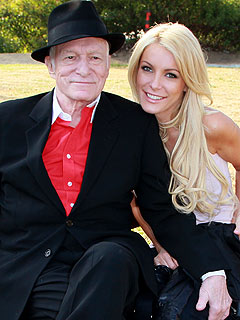LONDON (AP) — Nearly everywhere around the world, people are living longer and fewer children are dying. But increasingly, people are grappling with the diseases and disabilities of modern life, according to the most expansive global look so far at life expectancy and the biggest health threats.
The last comprehensive study was in 1990 and the top health problem then was the death of children under 5 — more than 10 million each year. Since then, campaigns to vaccinate kids against diseases like polio and measles have reduced the number of children dying to about 7 million.
Malnutrition was once the main health threat for children. Now, everywhere except Africa, they are much more likely to overeat than to starve.
With more children surviving, chronic illnesses and disabilities that strike later in life are taking a bigger toll, the research said. High blood pressure has become the leading health risk worldwide, followed by smoking and alcohol.
"The biggest contributor to the global health burden isn't premature (deaths), but chronic diseases, injuries, mental health conditions and all the bone and joint diseases," said one of the study leaders, Christopher Murray, director of the Institute of Health Metrics and Evaluation at the University of Washington.
In developed countries, such conditions now account for more than half of the health problems, fueled by an aging population. While life expectancy is climbing nearly everywhere, so too are the number of years people will live with things like vision or hearing loss and mental health issues like depression.
The research appears in seven papers published online Thursday by the journal Lancet. More than 480 researchers in 50 countries gathered data up to 2010 from surveys, censuses and past studies. They used statistical modeling to fill in the gaps for countries with little information. The series was mainly paid for by the Bill & Melinda Gates Foundation.
As in 1990, Japan topped the life expectancy list in 2010, with 79 for men and 86 for women. In the U.S. that year, life expectancy for men was 76 and for women, 81.
The research found wide variations in what's killing people around the world. Some of the most striking findings highlighted by the researchers: — Homicide is the No. 3 killer of men in Latin America; it ranks 20th worldwide. In the U.S., it is the 21st cause of death in men, and in Western Europe, 57th.
— While suicide ranks globally as the 21st leading killer, it is as high as the ninth top cause of death in women across Asia's "suicide belt," from India to China. Suicide ranks 14th in North America and 15th in Western Europe.
— In people aged 15-49, diabetes is a bigger killer in Africa than in Western Europe (8.8 deaths versus 1 death per 100,000).
— Central and Southeast Asia have the highest rates of fatal stroke in young adults at about 15 cases per 100,000 deaths. In North America, the rate is about 3 per 100,000.
Globally, heart disease and stroke remain the top killers. Reflecting an older population, lung cancer moved to the 5th cause of death globally, while other cancers including those of the liver, stomach and colon are also in the top 20. AIDS jumped from the 35th cause of death in 1990 to the sixth leading cause two decades later.
While chronic diseases are killing more people nearly everywhere, the overall trend is the opposite in Africa, where illnesses like AIDS, malaria and tuberculosis are still major threats. And experts warn again shifting too much of the focus away from those ailments.
"It's the nature of infectious disease epidemics that if you turn away from them, they will crop right back up," said Jennifer Cohn, a medical coordinator at Doctors Without Borders.
Still, she acknowledged the need to address the surge of other health problems across Africa. Cohn said the agency was considering ways to treat things like heart disease and diabetes. "The way we treat HIV could be a good model for chronic care," she said.
Others said more concrete information is needed before making any big changes to public health policies.
"We have to take this data with some grains of salt," said Sandy Cairncross, an epidemiologist at the London School of Hygiene and Tropical Medicine.
He said the information in some of the Lancet research was too thin and didn't fully consider all the relevant health risk factors.
"We're getting a better picture, but it's still incomplete," he said.
___
Online:
www.lancet.com
http://healthmetricsandevaluation.org










